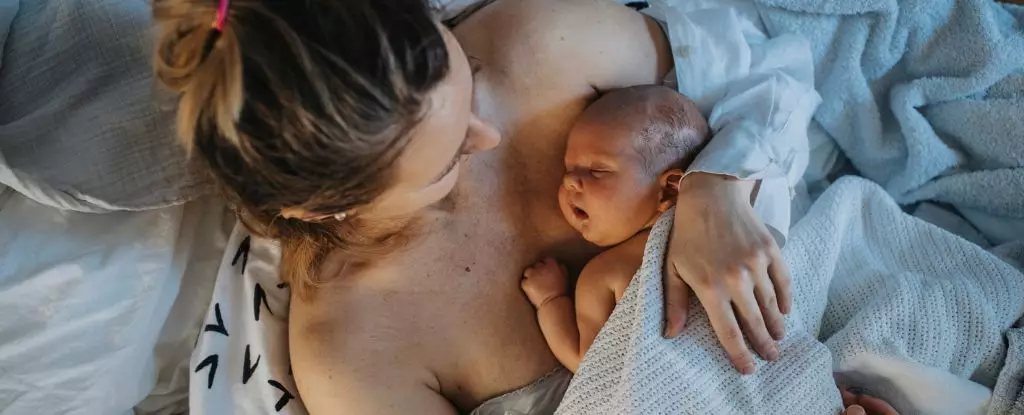

Babies born via C-section miss out on the bacteria from their mother’s vagina. This can have an impact on the newborn’s microbiome, which may or may not impact their future health and development. To rebalance gut bacteria following a C-section, a small new study undertaken by researchers from Southern Medical University in China suggests the practice of “vaginal seeding” could be an effective way. Vaginal seeding is a process where a cotton gauze is doused in a mother’s vaginal fluid and smeared on the newborn baby.
In the study, the lips, skin, and hands of 32 newborns delivered via C-section were treated with a carefully screened vaginal swab that had been taken from their mother two hours prior to the birth. The babies were swabbed for approximately 15 seconds and were not bathed in their first 12 hours. Six weeks later, the poop from these babies contained more of their mother’s bacteria and more mature bacteria than 36 other babies born via C-section that were only swabbed with a simple saline solution.
After six months, children who received the vaginal swab scored higher on a brain development survey filled out by their parents. Their scores were on par with the development of babies born vaginally. All parents were blind to what treatment their baby had received. However, the study only tested the microbiomes of babies for 42 days.
The British Medical Journal and the United States American College of Obstetricians and Gynecologists both caution against vaginal seeding after a C-section. There are potentially severe and fatal consequences if babies are accidentally exposed to harmful pathogens. Its proposed benefits are based on uncertain science, and to date, there simply isn’t enough evidence to recommend vaginal seeding after a C-section.
While C-section babies do show a different range of bacteria in their guts compared to those born vaginally, some studies suggest that the differences disappear after about nine months. At a population level, some studies have linked C-sections to an increased likelihood of childhood obesity, asthma, and diabetes later in life.
Researchers argue that vaginal seeding studies should compare babies born via C-section to those born via vagina. Microbes thrown out of balance in babies born by C-section are very similar to those thrown off balance in babies born to mothers receiving antibiotics but delivering vaginally. It is likely that routine antibiotic administration given to mothers delivering by C-section is a major underlying problem.
In 2020, the authors of a pilot study argued that what C-section babies were really missing was not exposure to their mother’s vaginal bacteria but exposure to her intestinal bacteria. Comparing the microbiomes of babies born vaginally and by C-section, researchers found that vaginal swabbing does not correct the C-section-induced microbiota imbalance compared to babies born vaginally. Instead, a poop transplant did.
Yan He and his colleagues plan to keep studying the potential neurodevelopmental effects of vaginal seeding. However, it is worth keeping in mind that there may be more to the story than missing bacteria from one part of the body.
Radionuclides, often relegated to discussions surrounding nuclear energy and radioactive waste, have far-ranging implications for…
Landslides have long been a concern in areas like California, where the unique geography and…
In the vastness of our galaxy, among countless stars, lies a fascinating phenomenon known as…
This week marks a monumental milestone in astronomy as the Hubble Space Telescope celebrates its…
The enigma of dark matter has captivated the scientific community for decades. Although it constitutes…
As individuals age, the likelihood of encountering age-related macular degeneration (AMD) significantly increases, posing a…
This website uses cookies.